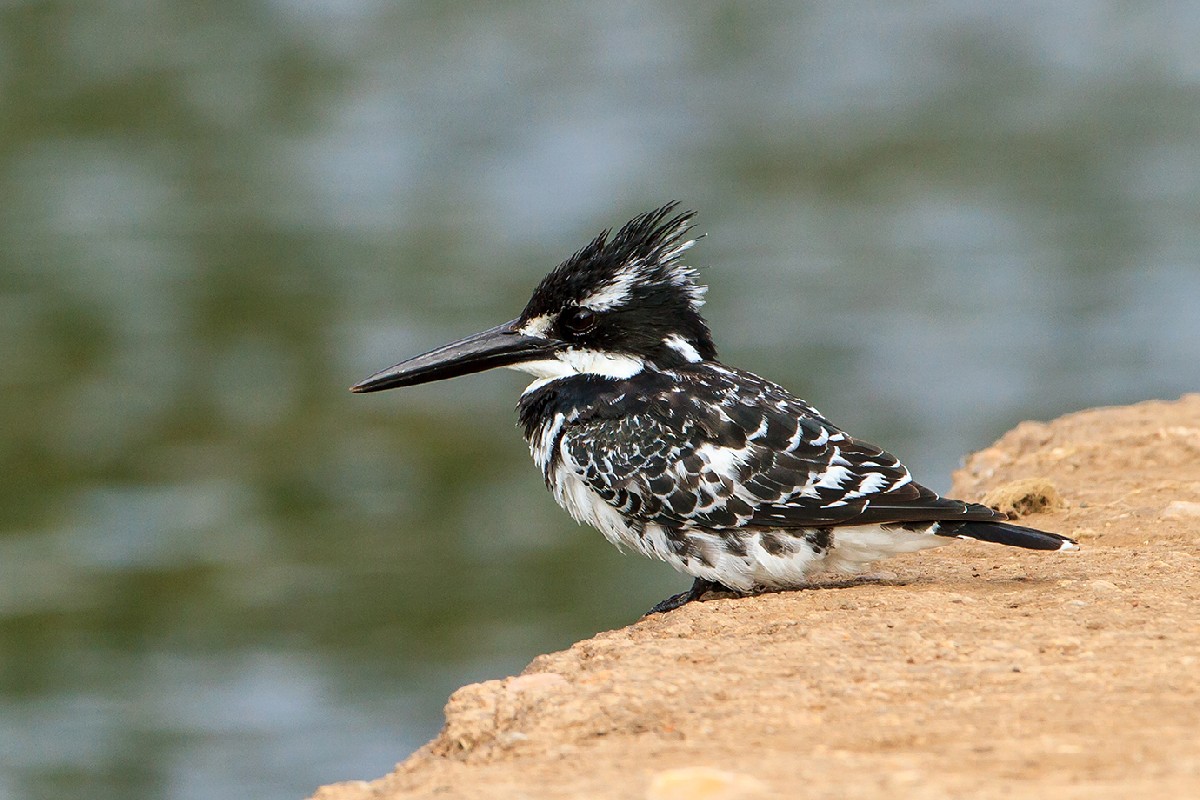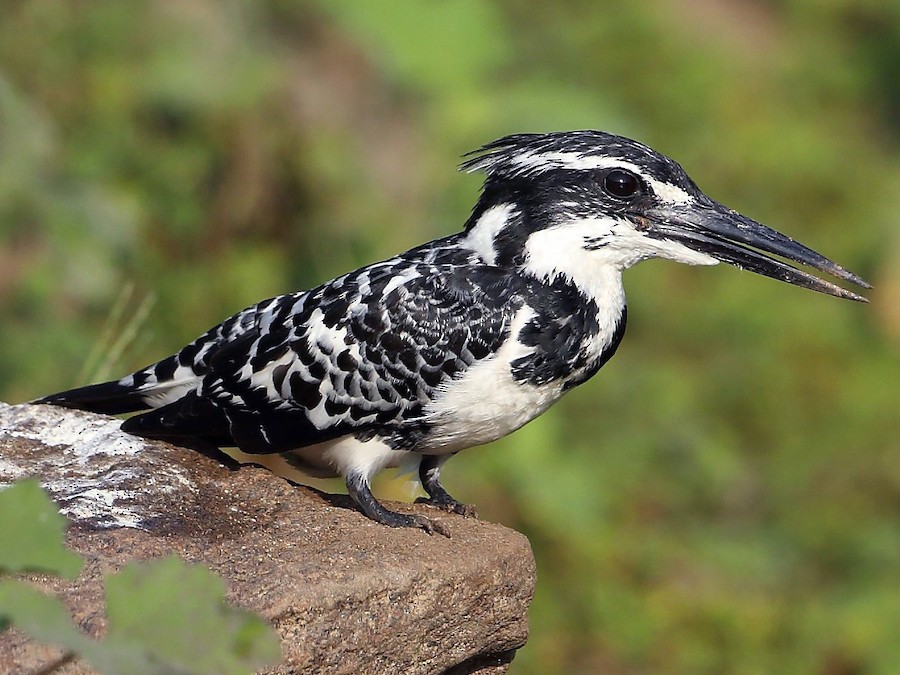Ultimate Guide to the Pied Kingfisher: Africa’s Iconic Hovering Hunter
Pied kingfisher: Discover the iconic Pied Kingfisher (Ceryle rudis) – Africa’s masterful hovering hunter! Learn identification, behavior, best Uganda birding spots (Kazinga Channel, Mabamba, Murchison Falls), diet, nesting & more with Gorilla Nests Safaris. Perfect for birdwatchers planning an East African safari!
Introduction:
The Pied Kingfisher (Ceryle rudis) is arguably the most recognizable and photographed kingfisher in Africa. With its striking black-and-white plumage, shaggy crest, and breathtaking hovering flight, this charismatic bird has captured the hearts of birdwatchers from Lake Victoria to the Nile, and from the wetlands of Mabamba Swamp to the Kazinga Channel in Queen Elizabeth National Park.
Whether you’re an avid birder planning a Uganda birdwatching safari or simply curious about African birds, the Pied Kingfisher never fails to impress.
In Uganda and East Africa, few sights are as thrilling as watching a Pied Kingfisher suspend itself motionless in mid-air 10–20 meters above the water, wings beating rapidly, before plunging headfirst to snatch a fish with deadly precision.
This guide, brought to you by Gorilla Nests Safaris, covers everything you need to know about this incredible species—from identification and behavior to the best places to see Pied Kingfishers in Uganda.
Scientific Classification of the Pied Kingfisher
- Scientific name: Ceryle rudis
- Common name: Pied Kingfisher
- Family: Alcedinidae (Kingfishers)
- Order: Coraciiformes
- Genus: Ceryle
- Subspecies: Five recognized subspecies across its range (C. r. rudis, C. r. leucomelanura, etc.)
The genus Ceryle contains only four species worldwide, making the Pied Kingfisher part of an exclusive group of large, fish-eating kingfishers.

pied kingfisher Physical Description & Identification
The Pied Kingfisher is unmistakable thanks to its bold monochrome plumage:
- Size: 25–28 cm in length (including bill and tail)
- Wingspan: Approximately 43–46 cm
- Weight: 68–110 grams
- Plumage: Crisp black and white pattern
- Double black breast bands in males
- Single broken breast band in females
- White throat, cheeks, and supercilium
- Black mask through the eye
- Prominent shaggy black crest
- Bill: Long, dagger-like, black
- Legs: Black
- Juveniles: Duller with greyish barring on the breast and less defined bands
How to tell male and female Pied Kingfishers apart:
Look at the chest—males have two complete black bands, while females have one complete band and one broken or faded band in the center.
Habitat and Distribution
The Pied Kingfisher has one of the widest distributions of any kingfisher species:
- Africa: Throughout sub-Saharan Africa (including Uganda, Kenya, Tanzania, Rwanda, South Africa, Zambia, Botswana, Namibia) and North Africa along the Nile Valley
- Middle East: Egypt, Israel, Jordan, Iraq
- Asia: Turkey, Syria, Lebanon, Iran, Pakistan, India, Sri Lanka, and parts of Southeast Asia
They are true water birds and are almost always found near:
- Slow-moving rivers
- Lakes and lake shores
- Dams and reservoirs
- Wetlands and swamps
- Mangroves and estuaries
- Irrigation canals
In Uganda, they are extremely common and can be seen on almost every boat trip or lakeside drive.
Behavior & Unique Characteristics
What makes the Pied Kingfisher so special?
- Hovering Mastery
The Pied Kingfisher is one of only two kingfisher species worldwide (along with the similar-looking Crested Kingfisher in Asia) capable of true sustained hovering while hunting. They can remain stationary in the air for up to 30–60 seconds, beating their wings at high speed while scanning the water below. - Social and Noisy
Unlike many solitary kingfishers, Pied Kingfishers are highly vocal and often seen in small family groups or loose colonies. Their sharp, shrill “kit-kit-kit” calls are a constant soundtrack along African waterways. - Cooperative Breeding
They are one of the few bird species that practice cooperative breeding—young from previous seasons often stay to help raise their siblings. - Territorial Displays
Males perform dramatic hovering displays and chase rivals at high speed over the water.

pied kingfisher Diet and Hunting Techniques
Primary diet: Small fish (tilapia, cichlids, barbel, mosquito fish)
Secondary prey: Crustaceans (freshwater crabs, prawns), aquatic insects, frogs, tadpoles
Hunting methods:
- Hover-hunting (unique among most kingfishers)
- Perch-hunting from reeds, branches, or rocks
- Plunge-diving from 5–20 meters
- Beating larger prey against a perch before swallowing head-first
Fun fact: They can swallow fish longer than their own body length by skillfully maneuvering the prey in their bill.
pied kingfisher Reproduction and Nesting Habits
Pied Kingfishers are burrow nesters:
- Both male and female excavate a 1–2 meter long tunnel into a vertical sandy or earthen riverbank
- The tunnel ends in a nesting chamber lined with fish bones and regurgitated pellets
- Clutch size: 3–6 glossy white eggs
- Incubation: 17–18 days (shared by both parents and sometimes helpers)
- Fledging: 23–29 days
- Helpers (usually previous offspring) assist with feeding chicks—sometimes up to 5–7 helpers per nest!
This cooperative system allows them to raise multiple broods per year in good conditions.
Lifespan and Predators
- Average lifespan in the wild: 6–10 years
- Known longevity record: 14+ years
Main predators:
- Birds of prey (African Fish Eagle, martial eagles, goshawks)
- Nile monitor lizards
- Snakes
- Otters and mongooses raiding nests
Chicks inside burrows are relatively safe from most predators except monitor lizards and snakes.
Pied Kingfishers in Uganda – Where to See Them
Uganda is one of the best countries in Africa to observe and photograph Pied Kingfishers. Here are the top hotspots:
- Mabamba Swamp (near Entebbe) – Famous for Shoebill, but Pied Kingfishers are everywhere on the papyrus edges
- Lake Mburo National Park – Boat trips on the lake guarantee close-up views
- Queen Elizabeth National Park – Kazinga Channel – One of the highest densities in Africa; boat safaris offer eye-level hovering photos
- Murchison Falls National Park – Nile River – Watch them hunt below the falls and along the Victoria Nile
- Lake Victoria shores (Entebbe, Lutoboka Bay on Ssese Islands)
- Bigodi Wetland near Kibale Forest
At Gorilla Nests Safaris, our expert birding guides know exactly where the most active kingfisher territories are—many of our guests get frame-filling photos from the boat!
Conservation Status
- IUCN Red List: Least Concern (LC)
- Population trend: Stable and locally abundant
They benefit from man-made habitats such as dams, fish ponds, and irrigation canals. However, pollution, wetland drainage, and riverbank erosion are localized threats.
Ecological Importance
Pied Kingfishers play a valuable role as:
- Natural controllers of small fish populations
- Indicators of clean, healthy aquatic ecosystems
- Flagship species for wetland conservation and ecotourism
Their presence is often a sign that a lake or river still supports good fish stocks.
Fun Facts About Pied Kingfishers
- They are the only kingfishers that can truly hover for extended periods while hunting.
- A Pied Kingfisher can eat fish up to 1.5 times its own body length!
- They sometimes hunt in coordinated groups—several birds hover together to herd fish.
- One of the most photographed birds on African safaris—right up there with lions and elephants!
- Their nests can be reused for many years and sometimes taken over by parrots or bee-eaters.
FAQ About Pied Kingfisher
Q: What does a Pied Kingfisher eat?
A: Mainly small fish, but also crustaceans, insects, frogs, and tadpoles.
Q: Where do Pied Kingfishers live?
A: Throughout sub-Saharan Africa, North Africa, the Middle East, and southern Asia—always near water.
Q: How can you tell male and female Pied Kingfishers apart?
A: Males have two complete black breast bands; females have one complete and one broken band.
Q: Are Pied Kingfishers endangered?
A: No—they are classified as Least Concern and remain common.
Q: Why do Pied Kingfishers hover?
A: To spot fish beneath the surface before diving. It’s an energy-intensive but highly effective hunting technique.
Final Thoughts – Plan Your Pied Kingfisher Adventure with Gorilla Nests Safaris
Few birds embody the spirit of African waterways like the Pied Kingfisher. Whether you’re cruising the Kazinga Channel at sunset, drifting silently through Mabamba Swamp at dawn, or watching them hover above the mighty Nile, these black-and-white acrobats will steal the show.
Ready to see Pied Kingfishers (and over 600 other Ugandan bird species) up close? Contact Gorilla Nests Safaris today to book your custom birdwatching and wildlife safari. Our expert guides and comfortable boats guarantee you’ll get the photos and memories of a lifetime.
WhatsApp: +256 770 738 589
Email: info@gorillanestssafaris.com
Let us take you to the heart of Uganda’s birding paradise—where the Pied Kingfishers are waiting!
